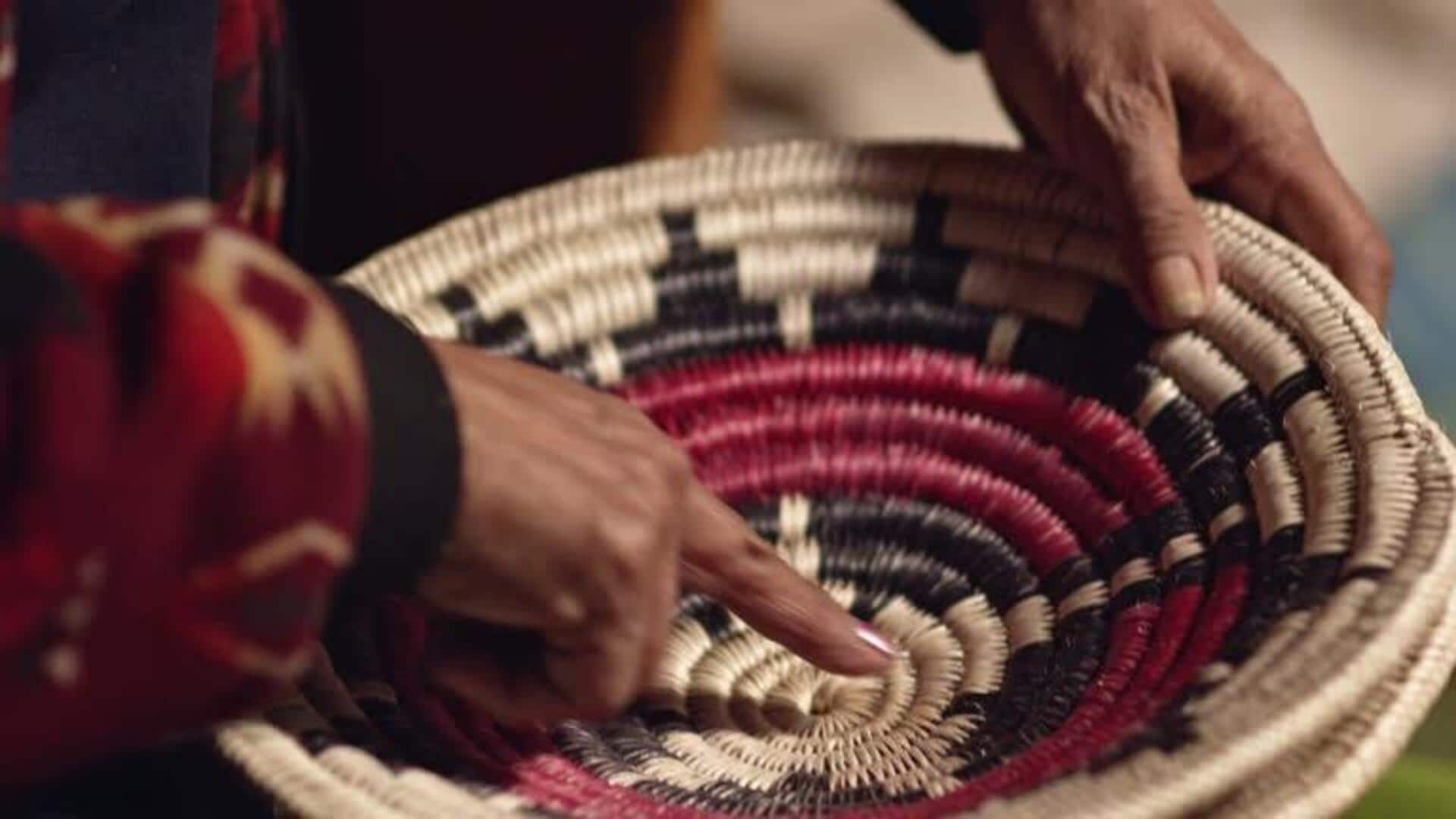
Want to learn basket weaving? Start here
What's the story
African basket weaving has been a traditional craft passed through generations. Famous for its intricate designs and vibrant colors, mastering this art takes a lot of patience, skill, and understanding of cultural significance. Be it a beginner or someone looking to refine skills, these pro-level tips will help you create authentic African baskets that reflect the rich heritage of this craft.
Materials
Understanding materials and tools
Selecting the right materials is the key to basket weaving. Natural fibers such as sisal, raffia, palm leaves, etc. are commonly used as they are durable and flexible. Each material provides a unique texture and color which can enhance your design. Get acquainted with these materials by trying out small projects before attempting more complex designs.
Techniques
Mastering basic techniques
Before you dive into advanced patterns, it's imperative that you master basic weaving techniques such as coiling, twining, and plaiting. These are the basic skills you need for most African basket designs. Practice each technique individually, taking time to learn and perfect them. This way, you'll have a solid foundation to build more complex designs on, increasing both skill and confidence in execution.
Patterns
Incorporating traditional patterns
Traditional African baskets are known for their geometric patterns, which are steeped in culture. To do justice to these designs in your work, it is important to research different tribal patterns and their meanings. Start small with simpler patterns and move on to complex ones as you progress. This way, you would not only do the tradition justice but also add meaningful artistry to your weaving.
Tension control
Maintaining consistent tension
Achieving consistent tension is key to crafting a basket with a uniform shape and structure. It is important to practice maintaining even tension throughout your weaving. Regularly check your work for areas that are too tight or too loose, adjusting as necessary. This careful attention will help ensure that your final product has a balanced and professional appearance, reflecting the quality of traditional craftsmanship.
Colors
Experimenting with color combinations
Color is important in African basketry aesthetics; vibrant hues can breathe life into any design, while muted tones offer subtle elegance. Experiment with different color combinations using natural dyes or pre-dyed fibers (available at craft stores) until you find what best suits your style preferences without compromising authenticity.